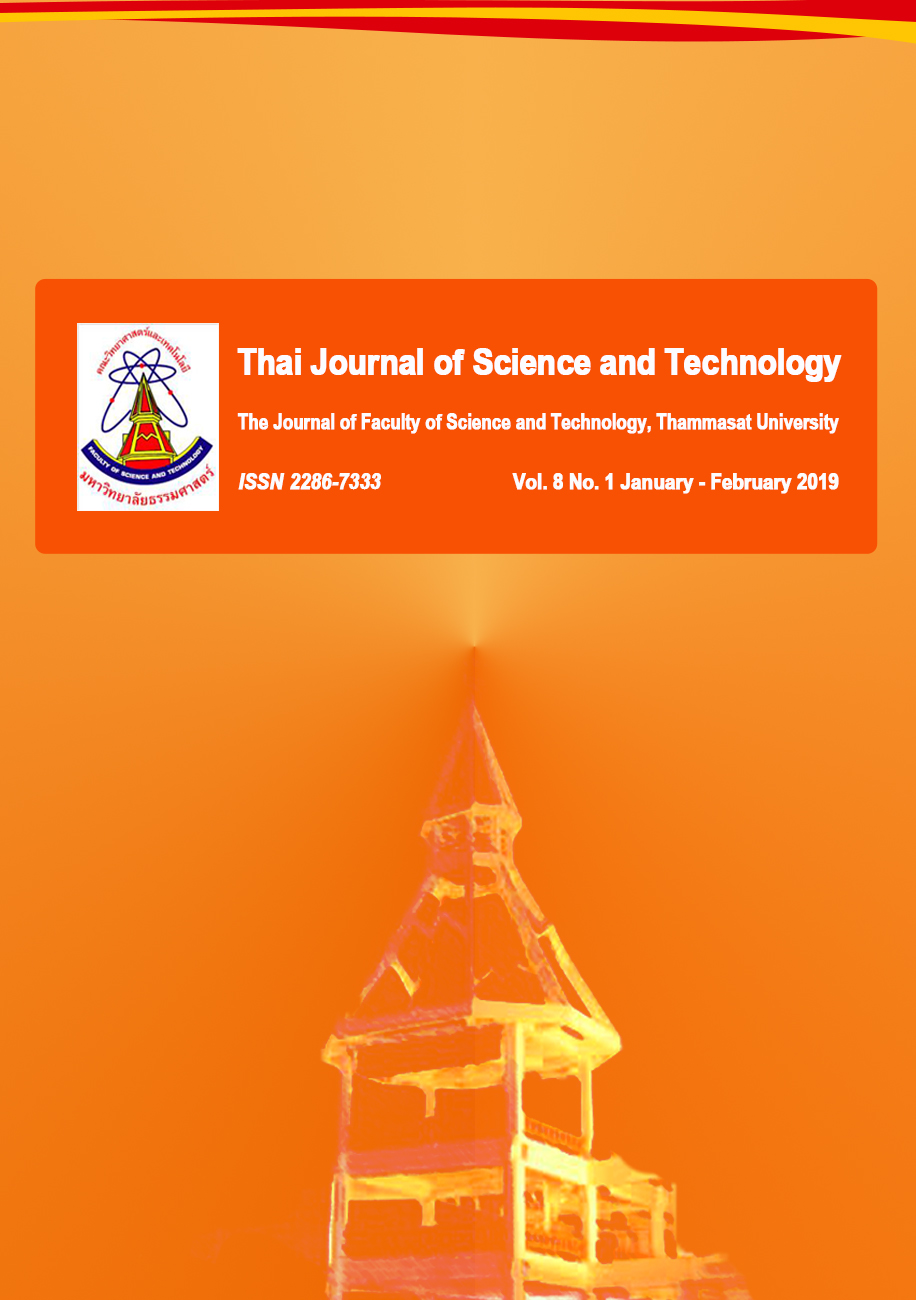การประเมินภาวะสุขภาพจากการรับสัมผัสโลหะเหล็กของผู้ประกอบอาชีพทำมีด
Main Article Content
Abstract
Abstract
Welder is the traditional occupation in Thailand. It is the most common work for knife making in Tha Chang, Nakhon-luang district in Ayutthaya. Iron fumes are undesirable products of the majority of welding operations and may have various detrimental effects on health. The purpose of this study was to measure the level of serum iron that affected to long-term occupational welding in order to investigate adverse health effect. Level of serum iron increased with the duration of exposure. The results showed significantly different of serum iron between welders and non-welders. In addition, there is no serious adverse health effect in welders exposed to iron fume. In conclusion, the occupational welders exposed to iron may increase the level of serum ferritin.
Keywords: iron; serum ferritin; welder
Article Details
บทความที่ได้รับการตีพิมพ์เป็นลิขสิทธิ์ของคณะวิทยาศาสตร์และเทคโนโลยี มหาวิทยาลัยธรรมศาสตร์ ข้อความที่ปรากฏในแต่ละเรื่องของวารสารเล่มนี้เป็นเพียงความเห็นส่วนตัวของผู้เขียน ไม่มีความเกี่ยวข้องกับคณะวิทยาศาสตร์และเทคโนโลยี หรือคณาจารย์ท่านอื่นในมหาวิทยาลัยธรรมศาสตร์ ผู้เขียนต้องยืนยันว่าความรับผิดชอบต่อทุกข้อความที่นำเสนอไว้ในบทความของตน หากมีข้อผิดพลาดหรือความไม่ถูกต้องใด ๆ
References
ปภาดา วิจิตรปภาวิรัช, 2557, สุขภาวะและสภาพการทำงานของแรงงานนอกระบบกลุ่มตีมีด จังหวัดศรีสะเกษ, ว.สำนักงานป้องกันควบคุมโรคที่ 7 3(1): 1-13.
พรรณี นันทะแสง และกาญจนา นาถะพินธุ, 2555, ปัญหาสุขภาพและสภาพแวดล้อมในการทำงานของช่างเชื่อมโลหะด้วยไฟฟ้า อำเภอเมือง จังหวัดหนองบัวลำภู, ว.วิจัยสาธารณสุขศาสตร์ มหาวิทยาลัยขอนแก่น 5: 21-30.
Assadi, S.N., 2017, What are the effects of psychological stress and physical work on blood lipid profiles?, Medicine 96(18): e6816.
Britton, R.S., Tavill, A.S. and Bacon, B.R., 1994, Mechanisms of Iron Toxicity, pp. 311-351, In Brock, J.H., Halliday, J.W., Pippard, M.J. and Powell, L.W. (Eds.), Iron Metabolism in Health and Disease, W.B. Saunders, London.
Casjens, S., Henry, J., Rihs, H.P., Lehnert, M., Raulf-Heimsoth, M., Welge, P., Lotz, A., Gelder, R.V., Hahn, J.U., Stiegler, H., Eisele, L., Weiss, T., Hartwig, A., Brüning, T. and Pesch, B., 2014, Influence of welding fume on systemic iron status, Ann. Occup. Hyg. 58: 1143-1154.
Ellingsen, D.G., Chashchin, M., Berlinger, B., Konz, T., Zibarev, E., Aaseth, J., Chashchin, V., Thomassen, Y., 2014, Biomarkers of iron status and trace elements in welders, J. Trace. Elem. Med. Biol. 28: 271-277.
Okada, S., 1998, Iron and carcinogenesis in laboratory animals and humans: A mechanistic consideration and review of literature, Int. J. Clin. Oncol. 3: 191-203.
Paiva, A.A., Rondó, P.H. and Guerra-Shinohara, E.M., 2000, Parameters for the assessment of iron status, Rev. Saude. Publica. 34: 421-426.
Singh, Z. and Chadha, P., 2016, Assessment of DNA damages as an index of genetic in wilding microenvironments among iron-based industries, Toxicol. Ind. Health. 32: 1817-1824.

